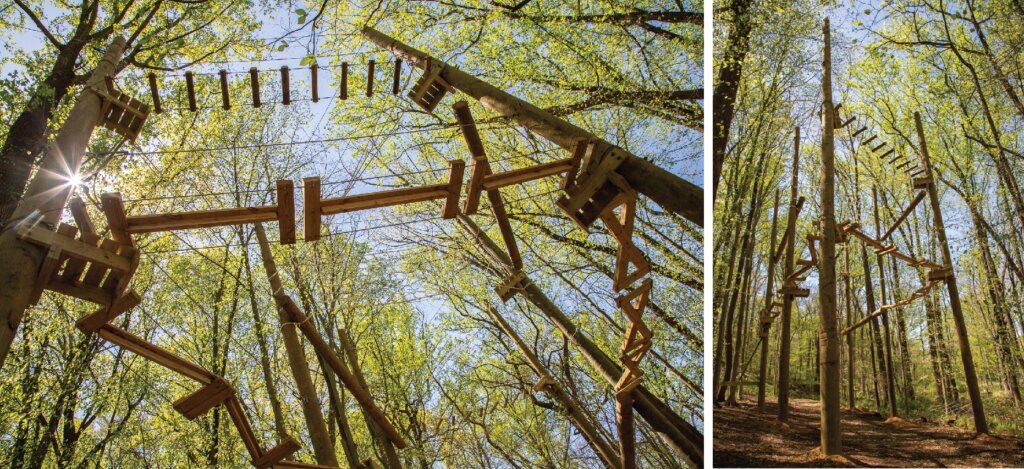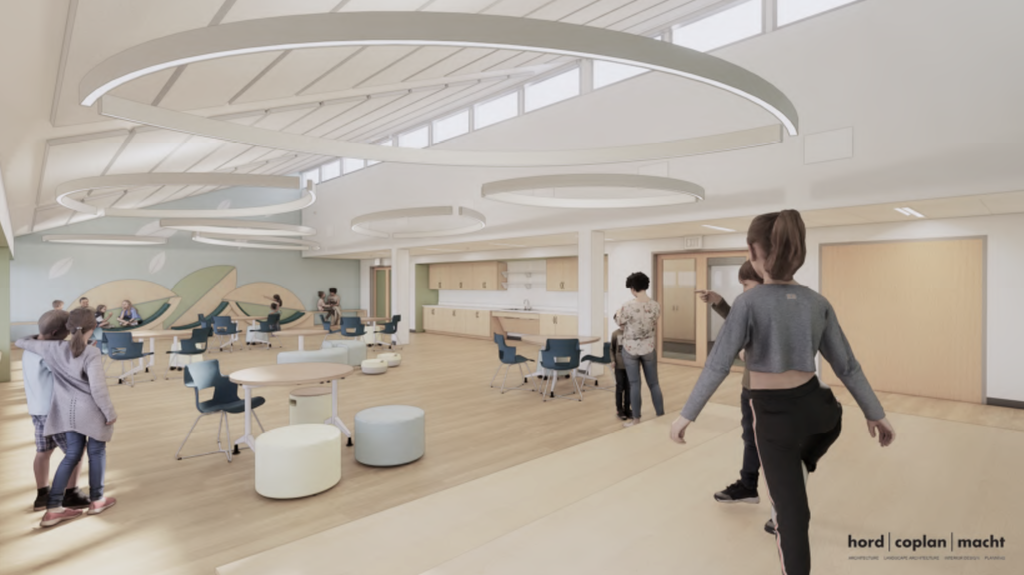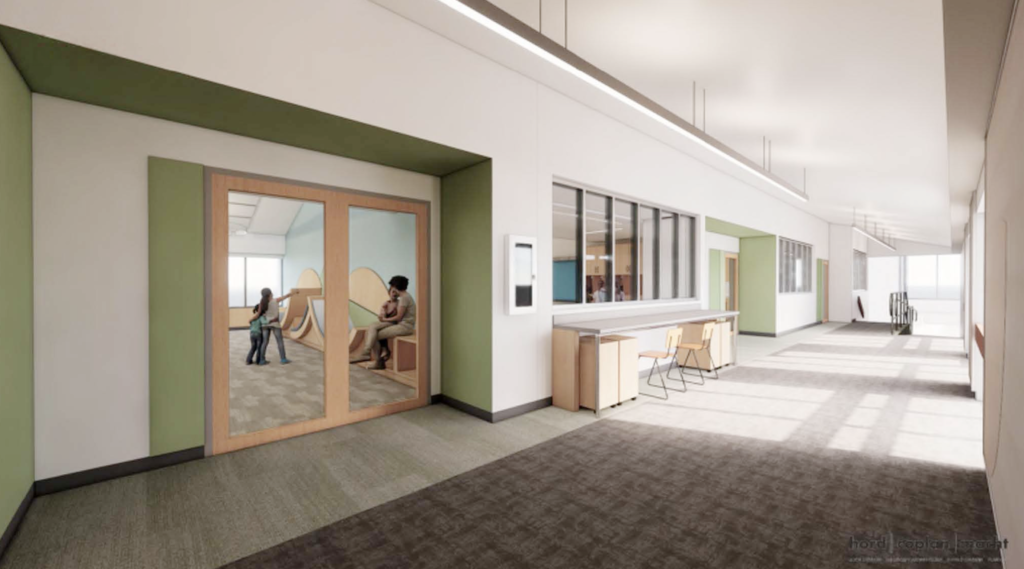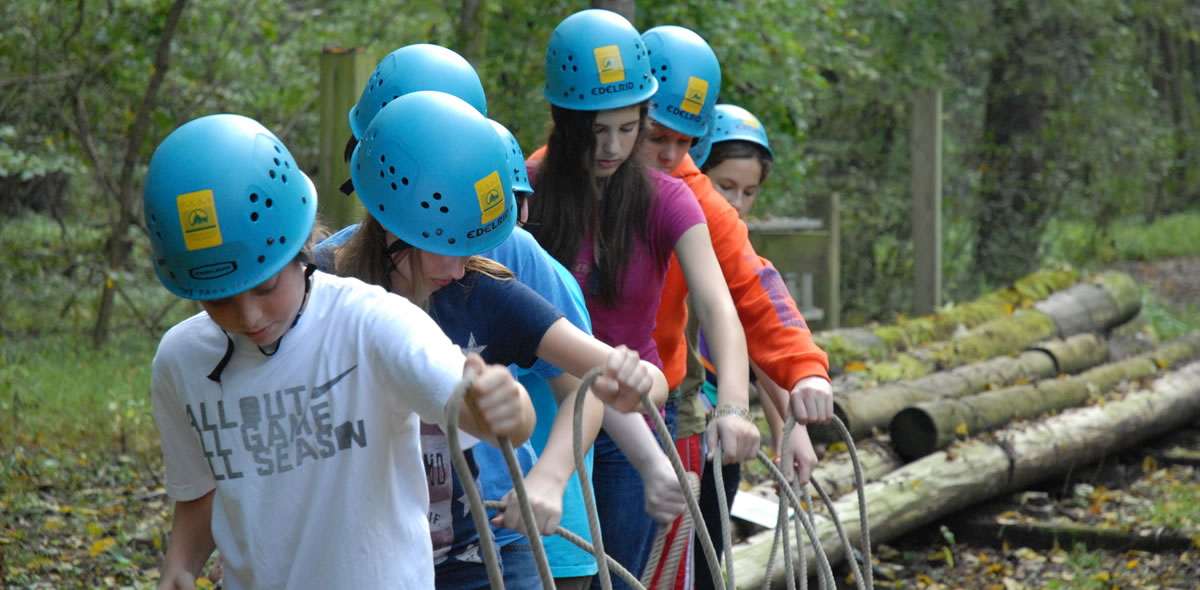Fifth Grade
Students spend their fifth grade year immersed in an expansive study of the Middle Ages.
Through hands-on, interdisciplinary experiences that engage drama, cooking, building, and the visual arts, students explore the evolution of and interactions between the great medieval civilizations of Asia, Africa, The Americas, and Europe.
Essential questions that guide our course of study are:
- How were human needs met during the Middle Ages?
- How did people exercise power in medieval culture?
- How did the interactions between groups of people affect various cultures?
- How did people around the world respond to their environment?
- How did the exchange of ideas, goods, and technology change the social structure in various regions around the world?
Language Arts
Reading
Fifth grade students engage deeply with both fiction and nonfiction texts. Authentic, self-directed research is a cornerstone of the fifth grade experience, and students make regular use of our classroom libraries to support their study of medieval cultures. Through reading, analyzing, and performing monologues from Lower School librarian Laura Amy Schlitz’s Newbery Award-winning collection Good Masters, Sweet Ladies, students develop their ability to analyze character with nuance and insight. Class discussions allow students to demonstrate understanding, pose thoughtful questions, predict outcomes, and share ideas and opinions. Goals for fifth grade students include becoming increasingly insightful and mature in their approach toward reading and versatile in their personal reading selections.
Writing
Fifth graders write throughout the school day. They write to be creative, to inform, and to report. They analyze, synthesize, and interpret information, and write in all areas of the curriculum. Their writing takes many forms, such as personal narrative, poetry, description, commentary, original monologue, essay, and research report. They formulate explanations for math solutions and construct arguments for scientific experiments. Students learn to see writing as a process, with the goal of clearly conveying an idea to a particular audience.
Library
Fifth grade students visit the school library twice a week—once as an individual class (solo library) and once as a whole grade (shared library.) During whole-grade sessions, librarian and Newbery Award-winning author Laura Amy Schlitz presents lectures on various cultures of the medieval world: Christian Europe, Viking, Russian, Mongolian, Japanese, West African, Ethiopian, and Arab. At solo library, Laura follows up with traditional tales, supporting the notion that stories illuminate the values of a culture, and that although cultures are often different, there are many parallels among the stories they tell. Solo library also provides an opportunity for students to browse and borrow books for their independent reading and for their first grade reading partners.
Mathematics
In the fifth-grade mathematics curriculum, students delve into the world of mathematics and its intricate relationships using a variety of sources. Enrichment activities, both numerical and spatial, extend their critical thinking as they explore units designed to develop computational reasoning. They investigate the relationship between fractions, decimals, and percents, and analyze changes over time. Additionally, students collect and analyze data in science, integrating mathematical skills as an essential part of their experimentation.
Throughout the curriculum, students are encouraged to think critically about math, ask probing questions, communicate their reasoning clearly, and appreciate multiple solution strategies. They strive for accuracy and efficiency in their work. Fifth graders engage in problem-solving exercises and are explicitly taught strategies for tackling these challenges, fostering a robust mathematical foundation and a love for the subject.
Music
Fifth graders are required to participate in one of three ensembles. Ensemble choices are Chorus, Band, and Strings. These ensembles meet once a week for 50 minutes. Classes continue to learn to read music and begin to use metric counting (1 & 2 &) for decoding rhythms, and more advanced use of Solfège (do, re, mi….). Following grade-level theme studies of the Middle Ages, students learn about sacred and secular music from that period. Our musical studies of the Middle Ages begin with learning where and when musical notation began. We also learn songs and perform medieval arrangements of instrumental works on xylophone pieces.
Physical Education
Fifth-grade physical education is the culmination of skills, techniques, and knowledge acquired throughout their years in Lower School. The expectation is that students demonstrate refined motor skills, and understand the social aspects of team formation, sportsmanship, space, and movement. Fifth graders are often looked to as the models of the Park School Physical Education Habits of Mind (Best Effort, Respect, Cooperative Learning, Fair Play, Lifetime Fitness, Perseverance, and Skill Building).
Science
In fifth grade, students explore genetics, knowledge-building in scientific communities, computer engineering, and the solar system. Students develop an understanding of how genes are passed down through generations, how a gene becomes a trait, and debate nature vs nurture. The unit ends with an opportunity to extract DNA from wheat germ. In winter, students dive into a computer game controller project in which they develop and code an online experience of their choice – a virtual music instrument, a game, a lacrosse training tool etc. – and then engineer an electrical controller that engages their audience and helps to interact with the computer more easily. In the last unit of the semester, students explore the solar system, discovering how humans have made huge discoveries over centuries of deep study and how the influences of Earth’s structure and place in the solar system create the green planet we have today. For the final project, each student chooses a planetary object in our solar system to research more deeply, ultimately writing a science fiction story that takes place in and is influenced by the environment of that celestial object.
CLASSROOM SCIENCE:
Catapults – Physics/Math Inquiry
Students embark on a fascinating journey of constructing catapults to execute experiments, exploring the realm of physics and mathematics. They meticulously collect data, uncovering the relationships between measures of central tendency — mean, median, mode, and range — to analyze their findings. The inquiry extends to examining blueprints of medieval structures, where they craft scale models in cardstock. Each unit of study encourages students to formulate arguments supported by data and to develop original questions, which they pursue through independent experimentation. Science, in this context, transcends mere description or information; it becomes a vibrant process of inquiry. At all stages, children learn to identify and pursue what they do not yet know, fostering a deep sense of curiosity and a love for discovery.
Life Cycle of the Garden – Observation and Scientific Drawing
In recording the life cycle of the garden, students learn the art of scientific drawing and the crucial skill of asking questions. This practice teaches them to observe keenly, make connections in nature, and translate these observations into thoughtful, detailed scientific drawings. By foraging for ink sources in nature, experimenting with various substances, and documenting each step, they engage in a hands-on exploration of chemistry. The inks they create are used for illuminations, bookmarks, and other projects. This powerful routine of observation, questioning, and connection-building lays a foundation for exploration, discovery, and wonder in their nature study and beyond, applicable to any academic discipline.
Architecture
A highlight of the students’ mathematical and scientific journey is the application of measurement and spatial reasoning skills in their thematic studies. This year-long process culminates in the construction of scale models of iconic medieval buildings, showcasing their understanding of geometry, scale, ratio, and proportion, as well as their ability to translate 2-D designs into 3-D structures. All work in science is intricately linked to the study of the Middle Ages, creating a cohesive and immersive learning experience. This interdisciplinary approach not only enhances their technical skills, but also instills a deep appreciation for the historical and cultural significance of their studies.
Spanish
In fifth grade, students continue to build on their listening and speaking skills with an increased focus on reading and writing. Classes are conducted primarily in Spanish to encourage participation and develop conversational skills, combining new vocabulary with what they’ve learned in previous years. Cultural connections are woven into lessons to enhance global perspectives. Students explore vocabulary related to their identity, learn to ask and answer questions, and develop reading and writing skills through story comprehension and creating original texts. Additionally, fifth-grade students immerse themselves in Hispanic culture by researching a Spanish-speaking country and learning about its landmarks, music, and food.
Technology
Fifth graders are introduced to basic web design functions, animation, and significantly advanced skills in Scratch programming. Students are also introduced to text-based programming with applications and games covering JavaScript and Python. Instruction surrounding digital citizenship is greatly increased during fourth and fifth grades as students explore the responsible use of media, online communication, media literacy, cyber-bullying, and digital footprints. Instruction based on digital arts, document formatting, and effective and appropriate online research is also built upon during the fifth-grade year. Using Tinkercad, fifth graders explore the design process to create and print a 3-D object to solve a problem. They become accomplished at designing and programming a robot using Lego Mindstorms.
Theme Studies, Social Studies, History
Serious scholarship about the medieval world requires students to think deeply about place. As they immerse themselves in the varied cultures of the medieval world through art, literature, drama, research, and writing, students develop an intimate sense of the geography and climate of different regions. The natural world becomes a gateway into deep, thoughtful engagement with culture—an engagement rooted in understanding of the relationship between where people live and how they live. Questions of power, social control, and the struggle for freedom and equity—both during the Middle Ages and in the modern world—inevitably arise as students examine the systems and practices that medieval people around the world used to ensure their own survival in their natural environment.
The culminating experience of fifth grade is a trimester-long project in which students pursue an in-depth research project on a medieval culture of their choosing. As part of this expansive, interdisciplinary experience, students craft a scale model of an iconic structure; write a travel guide explaining essential information about daily life; and perform an original monologue in the voice of a character living in their culture. The powerful characters and distinctive voices that emerge from this course of study testify to the children’s authentic understanding and deep investment. Students leave the fifth grade with profound appreciation and respect for culture in all its forms: able to make empathetic connections, identify patterns, ask meaningful questions, and approach unfamiliar practices with an open mind.
Visual Arts
Students delve deeper into creative projects by synthesizing the skills they’ve learned in previous years. Explorations include: digital drawing, landscape painting, multi-color linoleum block printing, building clay forms using a template, and creating layers, shapes, and symbols working from paper patterns of their own devising. Throughout the year, pattern is an area of focus revisited with multiple media. All students in Grades 3-5 keep a personal sketchbook for generating and recording ideas and designs, as well as a digital portfolio in which they document their process and their results.





